
On June 13, 1777, the Marquis de Lafayette arrived in America to offer his services in the Revolutionary War. He would become like a son to George Washington and was soon known as “the hero of two worlds.”
Marie Joseph Paul Yves Roch Gilbert du Motier, marquis de Lafayette, was born in Chavaniac, in Haute-Loire, France. His father died on the battlefield when Lafayette was two years old. His mother and grandmother died when he was 13. The young orphan inherited a great fortune.
Descended from a long line of soldiers, Lafayette studied at the Military Academy at Versailles. When he was 16, he married Marie Adrienne Françoise de Noailles, the daughter of one of the most powerful families in France. Shortly after his marriage, Lafayette became a captain in the cavalry. However, he disliked court life, and soon grew interested in the events of the American Revolution.
Serving in the French military, Lafayette traveled to Metz for duty, and by chance, attended a dinner with the Duke of Gloucester, the younger brother of King George III. As the Duke complained about the American colonists and mocked their revolutionary beliefs, Lafayette realized his mission. As he later recalled, “My heart was enlisted… and I thought only of joining my colors to those of the revolutionaries.”
In late 1776, Lafayette signed up to join a group of French officers being sent to America to offer their support. However, the British discovered this plan and threatened war, forcing its abandonment. But Lafayette was determined to go to America and offer his help. In spite of a decree forbidding French officers to serve in the war, Lafayette began making his own plans. After learning that the Continental Congress didn’t have the funds to pay for his voyage to America, he bought his own ship for 112,000 pounds. Lafayette also convinced several French officers to accompany him. He set sail on March 25, 1777, using much of the two-month journey to learn English.
Lafayette arrived near Charleston, South Carolina, on June 13, 1777. At the time, many other French officers were offering their services to the Continental Congress. Few could speak English however, or had significant military experience. At first, the Continental Congress was unimpressed with Lafayette, who spoke little English. But, when he agreed to serve without pay, the cash-poor Continental Congress appointed him a major general. He ended up paying over $200,000 of his own money during the war for his staff’s salaries, uniforms, and other expenses.
Ben Franklin reportedly urged George Washington to take the 19-year-old Lafayette under his wing. The two men met on August 10, 1777. Lafayette humbly explained he was there to learn, not to teach, which impressed Washington, and the two grew close quickly. In fact, after Lafayette was shot in the leg during the battle at Brandywine Creek, Washington summoned his personal surgeon and told him to treat Lafayette as if he were his son. Impressed with Lafayette’s courage, Washington recommended him for divisional command, which he received.
Lafayette’s victory at Gloucester earned him the command of a division. He served at Valley Forge during part of the terrible winter of 1777-78. Lafayette also fought at the battles of Barren Hill and Monmouth, and during the campaign to capture Rhode Island.
In 1779, Lafayette returned to France to participate in an invasion of Britain. Although the invasion never took place, Lafayette secured French aid for the Americans. He returned to America in April 1780. In 1781, Lafayette played an important role in the American victory at Yorktown. When he returned to France in 1782, Lafayette was received as a “hero to two worlds.”
Lafayette and Washington remained close, despite the ocean between them. They wrote each other regularly and Lafayette even sent Washington the key to Bastille after it was stormed at the beginning of the French Revolution.
In 1824, President James Monroe and the US Congress invited Lafayette to return to the US to celebrate the nation’s 50th anniversary. He arrived in New York on August 15, 1824 to a four-day celebration. Lafayette intended to spend four months in America and visit 13 states. However, he received numerous invitations and ended up staying 16 months and visiting all 24 states.
When Lafayette died in 1834, America went into mourning, and Congress requested that citizens wear black for a month to honor his memory.
| FREE printable This Day in History album pages Download a PDF of today’s article. Get a binder or other supplies to create your This Day in History album. |
Discover what else happened on This Day in History.

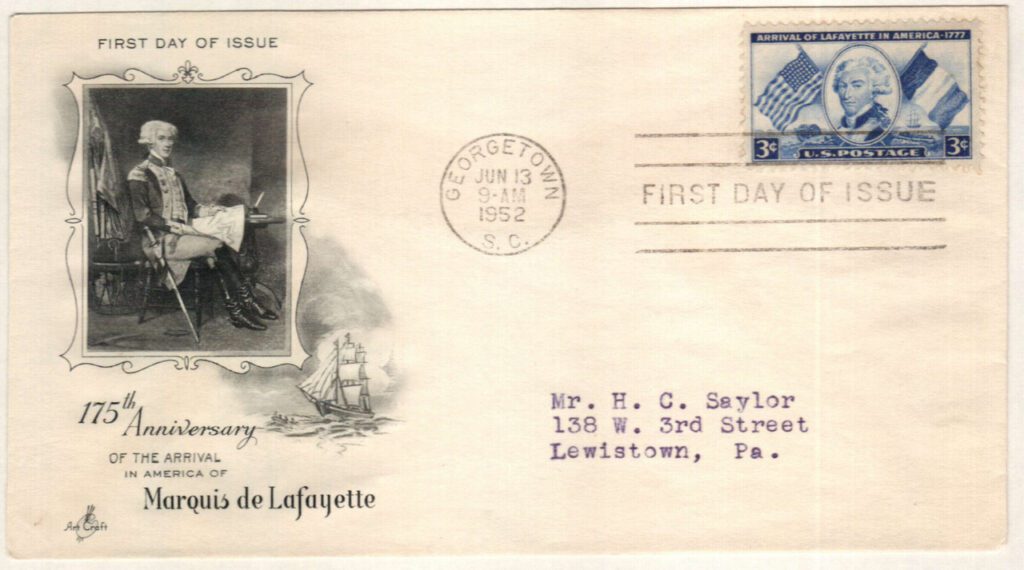

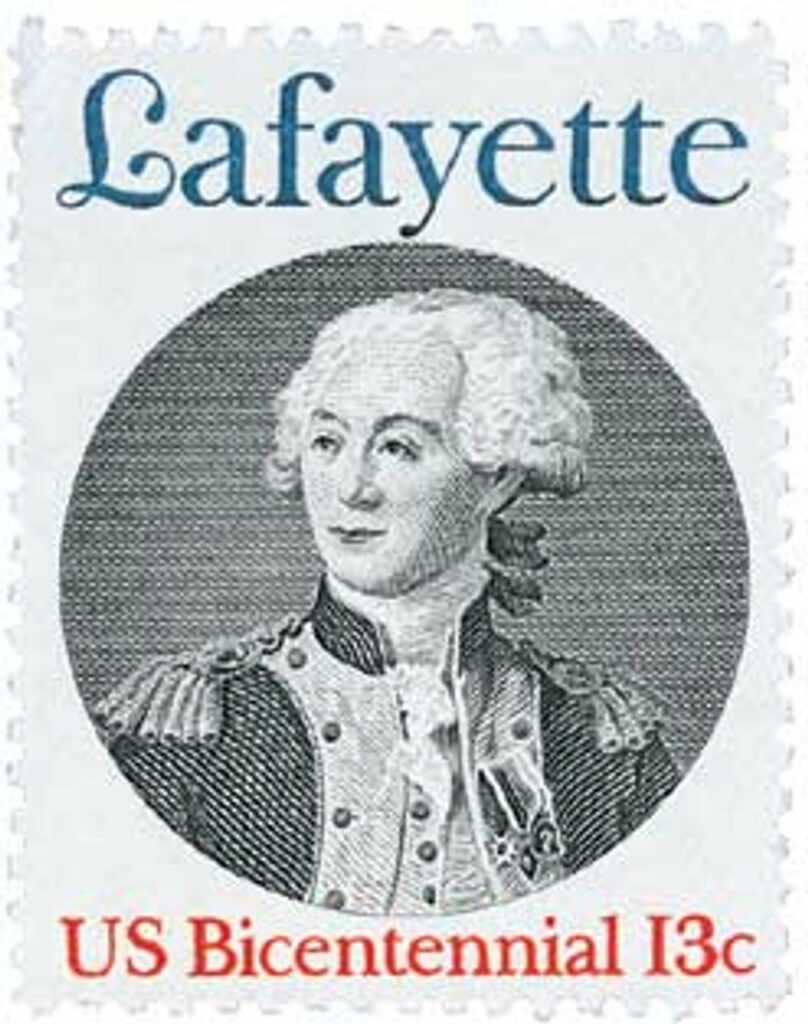
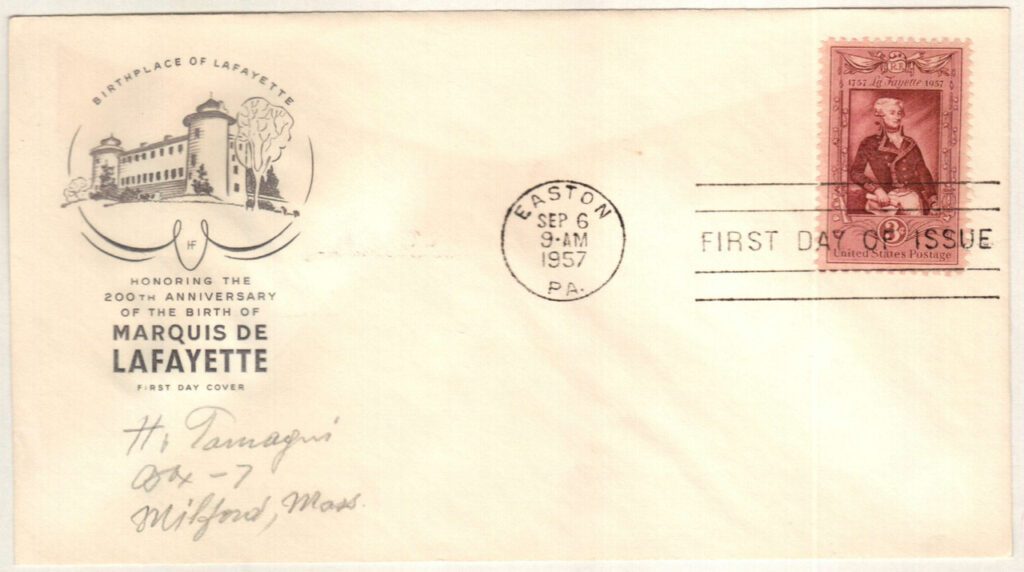
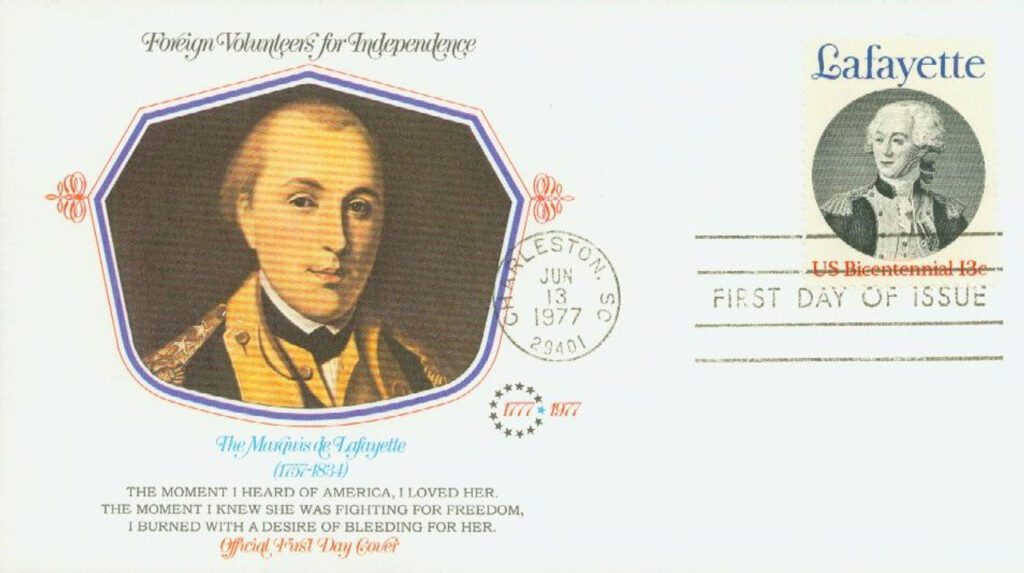
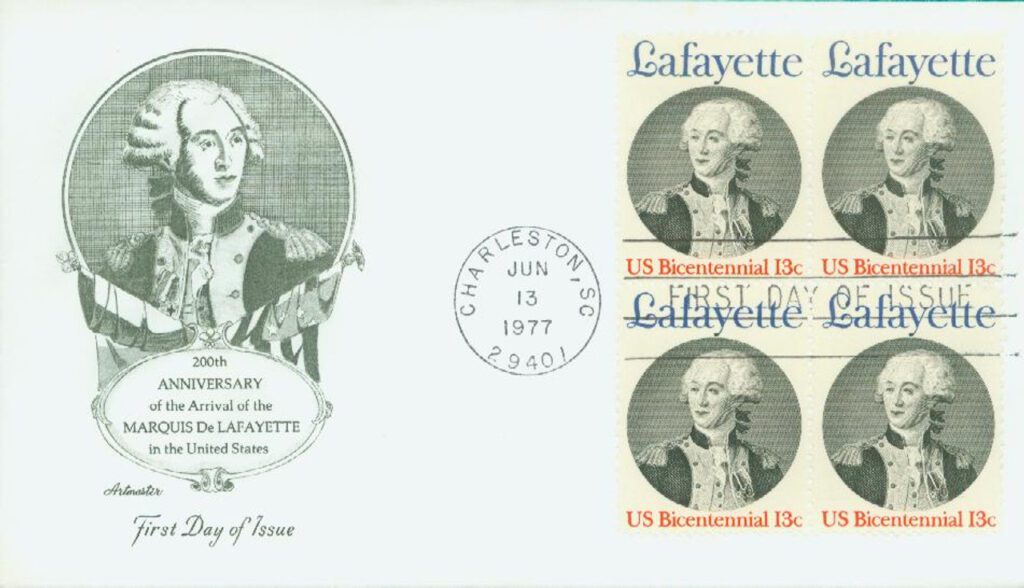
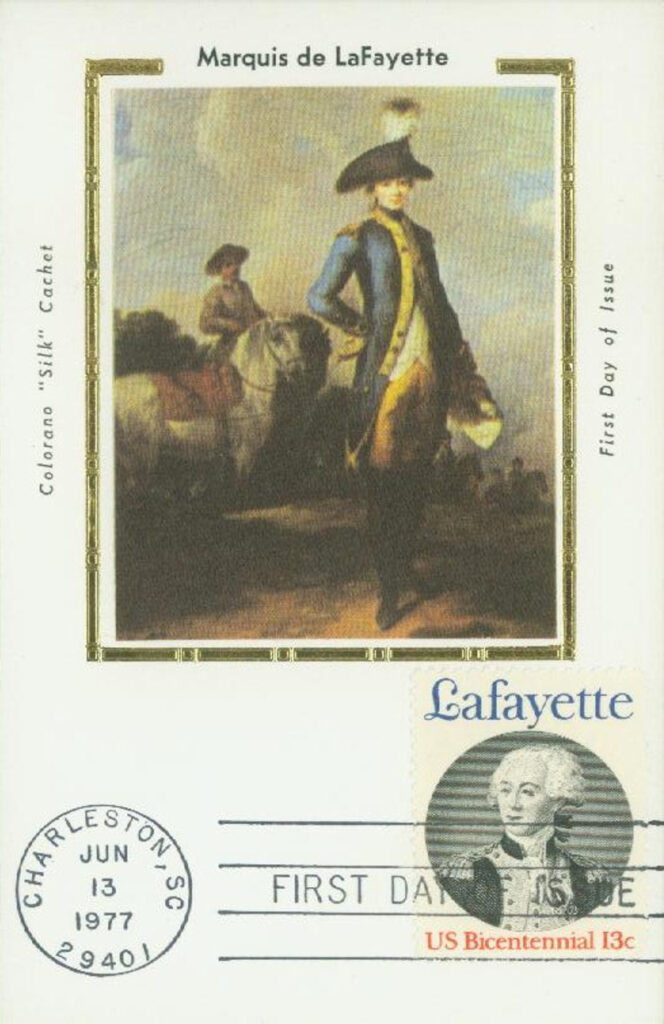
Very good. 2nd to the last paragraph, President James Monroe, not Hanes.
I, too, noted the misspelling of James as Hames, but the H and J are so close on the keyboard, it is easy to understand how it happened.
Thanks for your, as usual, excellent history lessons.
On June 8, 1825 Marquis de Lafayette passed through Canandaigua, Geneva, Waterloo and Seneca Falls and Auburn New York.
A great hero of the Revolutionary War. Many towns are named after him, including West Lafayette, In. the home of Purdue University.